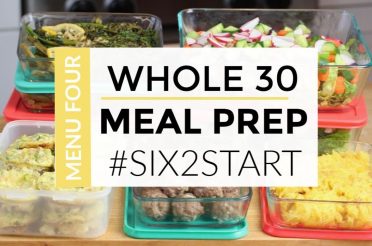[ad_1]
Can you make a sesame noodles recipe using shirataki noodles? Absolutely, and the result is so tasty and very close to the real thing!

I love shirataki noodles. When prepared correctly, they provide a wonderful keto, low-carb, and gluten-free alternative to noodles and pasta.
I normally prepare them by boiling and dry-roasting. Then I simply toss them with butter, garlic, and Parmesan. But a few months ago I decided to try using them in a sesame noodles recipe.
Success! These noodles are delicious, flavorful, and super-filling. I’ve been making this recipe regularly ever since – they’ve quickly become one of my favorite shirataki noodles recipes. Today, I’m sharing them with you.
Jump to:
Ingredients
Here’s an overview of the ingredients you’ll need to make this tasty recipe. The exact measurements are listed in the recipe card below:
Shirataki noodles: I use angel hair miracle noodles in this recipe.
Tahini: Also labeled as “sesame paste.” The only ingredient is ground sesame seeds.
Soy sauce: I use reduced-sodium soy sauce in most of my recipes. I find that traditional soy sauce is too salty. Obviously, you can use a gluten-free alternative if you wish.
Rice vinegar: If you don’t have any on hand, it’s OK to use white wine vinegar instead. I don’t recommend using plain distilled vinegar, though. It’s too acidic, in my opinion.
Red pepper flakes: They don’t make the dish very spicy. They just add an extra layer of flavor.
Shredded cabbage: I make life easy and use a bag of pre-washed and shredded cabbage.
For garnish: Sesame oil, toasted sesame seeds, and chopped scallions. But these are not just for garnish – they add nice flavor, and the scallions also add a pop of color to the finished dish.
Instructions
This is not a difficult recipe, although prepping the noodles requires a few steps. The detailed instructions are included in the recipe card below. Here are the basic steps:
Rinse the noodles, boil them, then drain. This will help get rid of their fishy smell.
Toast the drained noodles in a dry skillet. This step will improve their texture.
Mix together the sesame paste, soy sauce, rice vinegar, and red pepper flakes. Add this mixture and the cabbage to the noodles. Stir to coat.
Transfer to a plate. Top with the sesame oil, sesame seeds, and scallions, then serve.
Serving suggestions
Any Asian-style main dish is great with these noodles. I often serve them with Asian glazed salmon or with Asian meatballs.
They’re also good all on their own for a light meal, especially for lunch. And unlike regular pasta, they’re truly filling, even when eaten without a protein.
However, feel free to add a protein source such as tiny cooked shrimp or shredded cooked chicken.
Variations and substitutions
This recipe is excellent as is. But if you feel like varying it, here are a few ideas:
- Use natural creamy peanut butter instead of tahini.
- As mentioned above, you can mix cooked protein into the finished dish to turn it into a complete meal. Try cooked shredded chicken or tiny cooked shrimp.
- Top the noodles with a couple of fried eggs. Another delicious way to turn them from a side dish into a complete meal.
Frequently asked question
You start by rinsing them under cold water. This is important because they tend to have a fishy smell and rinsing them gets rid of the smell. Next, you boil them. The last step is to stir-fry them in a dry skillet. This improves their texture. Now they’re ready for any sauce you’d like to add!
They are. They are basically a zero-calorie, zero-carb, and also zero-flavor food (until they soak up some yummy sauce or are added to a flavorful soup!).
They’re made of water and glucomannan, a water-soluble dietary fiber. This explains their rubbery texture and also the fact that they contain no calories and have no flavor of their own.
Using up leftovers
You can keep the leftovers in the fridge, in an airtight container, for up to 4 days. Reheat them gently, in the microwave on 50% power.
Subscribe
I typically publish a new recipe once or twice per week. Want the new recipes in your inbox? Subscribe!
Recipe card
Shirataki Sesame Noodles
Making sesame noodles with shirataki is the perfect keto and low-carb solution! They are very tasty and surprisingly close to the real thing.
Servings: 1 serving
Calories: 188kcal
INGREDIENTS
- 1 teaspoon sesame seeds
- 1 (7 oz) bag angel hair shirataki noodles
- 1 tablespoon tahini (sesame paste)
- 1 tablespoon light soy sauce (or use a gluten-free alternative and add salt as needed)
- 1 teaspoon rice vinegar
- ⅛ teaspoon red pepper flakes
- 1 cup shredded cabbage
- 1 teaspoon sesame oil
- 1 large scallion chopped
INSTRUCTIONS
-
Heat a small skillet over medium-low heat and use it to toast the sesame seeds, about 2 minutes, just until golden. Watch out so that they don’t burn. Remove from skillet and set aside.
-
Bring a medium pot of water to a boil.
-
Using scissors, open the shirataki noodles package. Pour its contents into a colander. Ignore the slightly fishy smell – it will rinse/cook out. Rinse the noodles under cold running water for 30 seconds.
-
If the noodles are very long, use clean kitchen scissors to cut them in half.
-
By now, your water should be boiling. Transfer the noodles to the boiling water, bring back to a boil, and boil for 3 minutes.
-
While the noodles boil, heat a clean, dry medium-sized nonstick skillet over medium-high heat.
-
Pour the cooked noodles back into the colander and drain well. Transfer the noodles to the hot skillet and dry-roast them (adding no oil to the skillet), stirring, for 1-2 minutes, until they are visibly dry and make a squeaking sound when moved in the skillet. This step will get rid of the shirataki’s rubbery texture, and help the noodles better absorb the sauce.
-
While the noodles are dry-roasting, use a fork to mix together the sesame paste, soy sauce, rice vinegar, and red pepper flakes. Add the mixture to the dry noodles in the skillet (use a small rubber spatula to scrape it all off the mixing bowl) along with the shredded cabbage. Stir-fry until the noodles and cabbage are thoroughly coated, 1-2 minutes.
-
Turn the heat off. Transfer the noodles to an individual bowl. Drizzle with sesame oil and top with sesame seeds and chopped scallion. Enjoy immediately.
NOTES
Nutrition Facts
Shirataki Sesame Noodles
Amount per Serving
% Daily Value*
* Percent Daily Values are based on a 2000 calorie diet.

More recipes to try
[ad_2]
Source link







